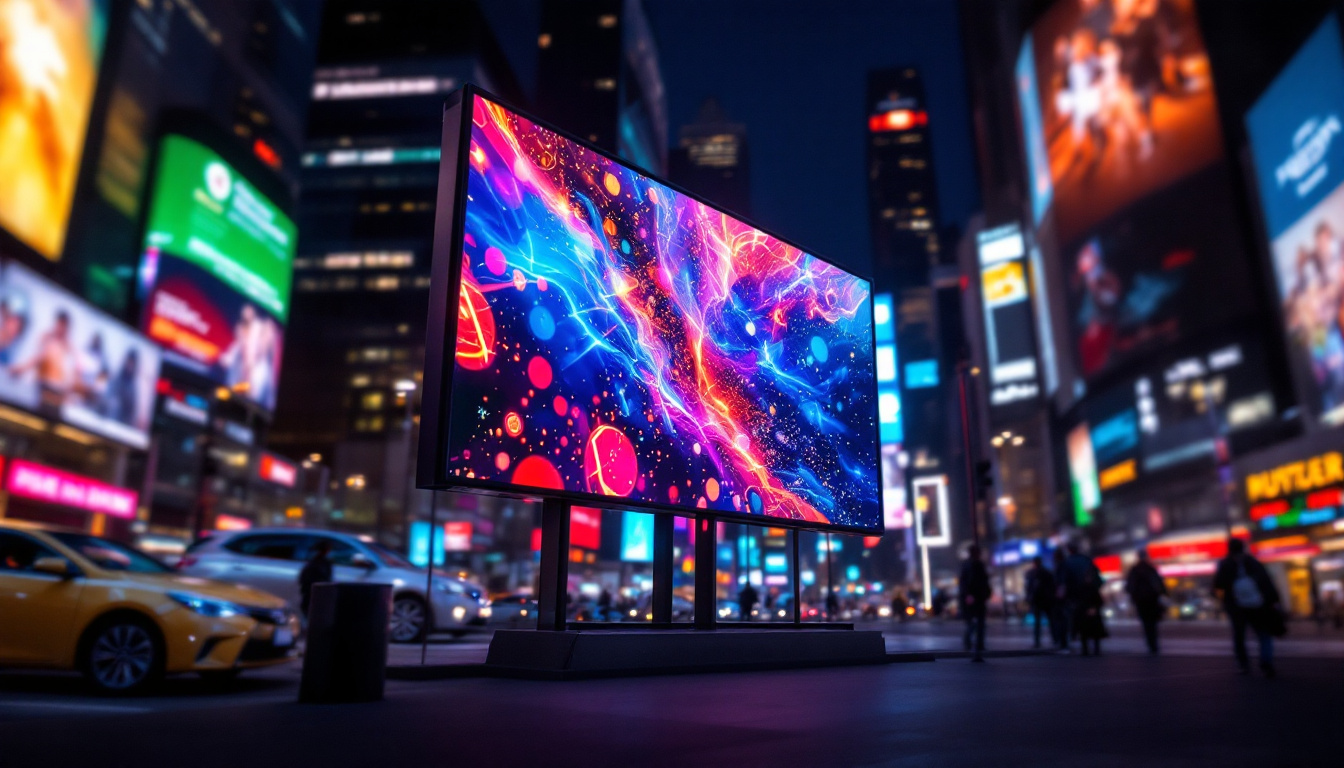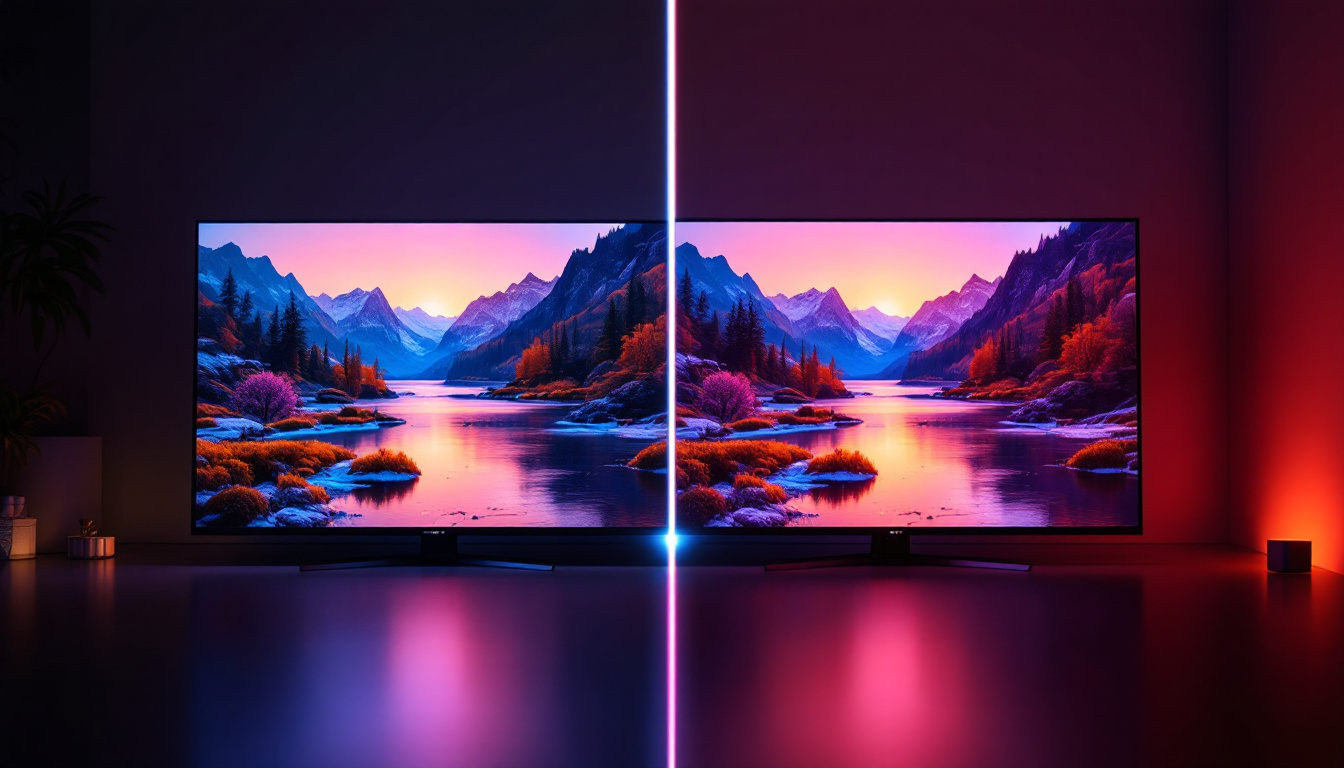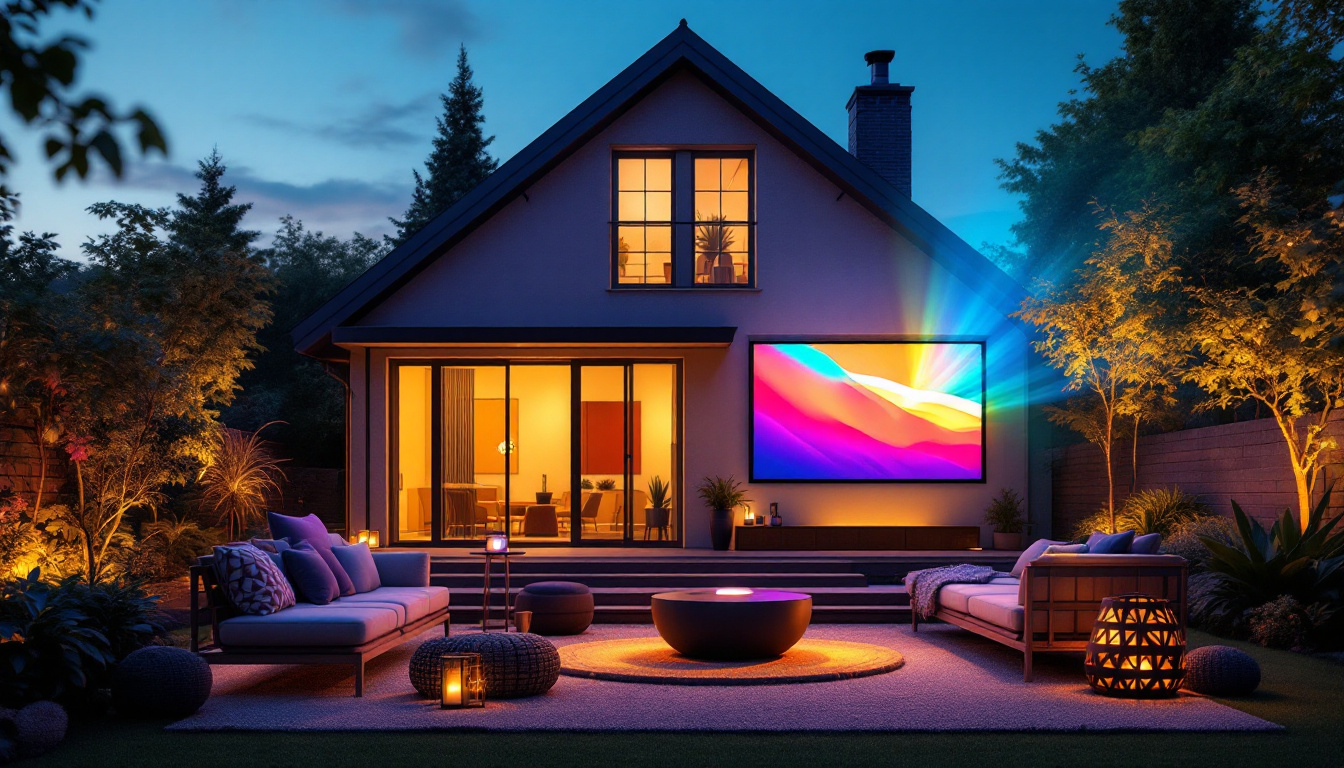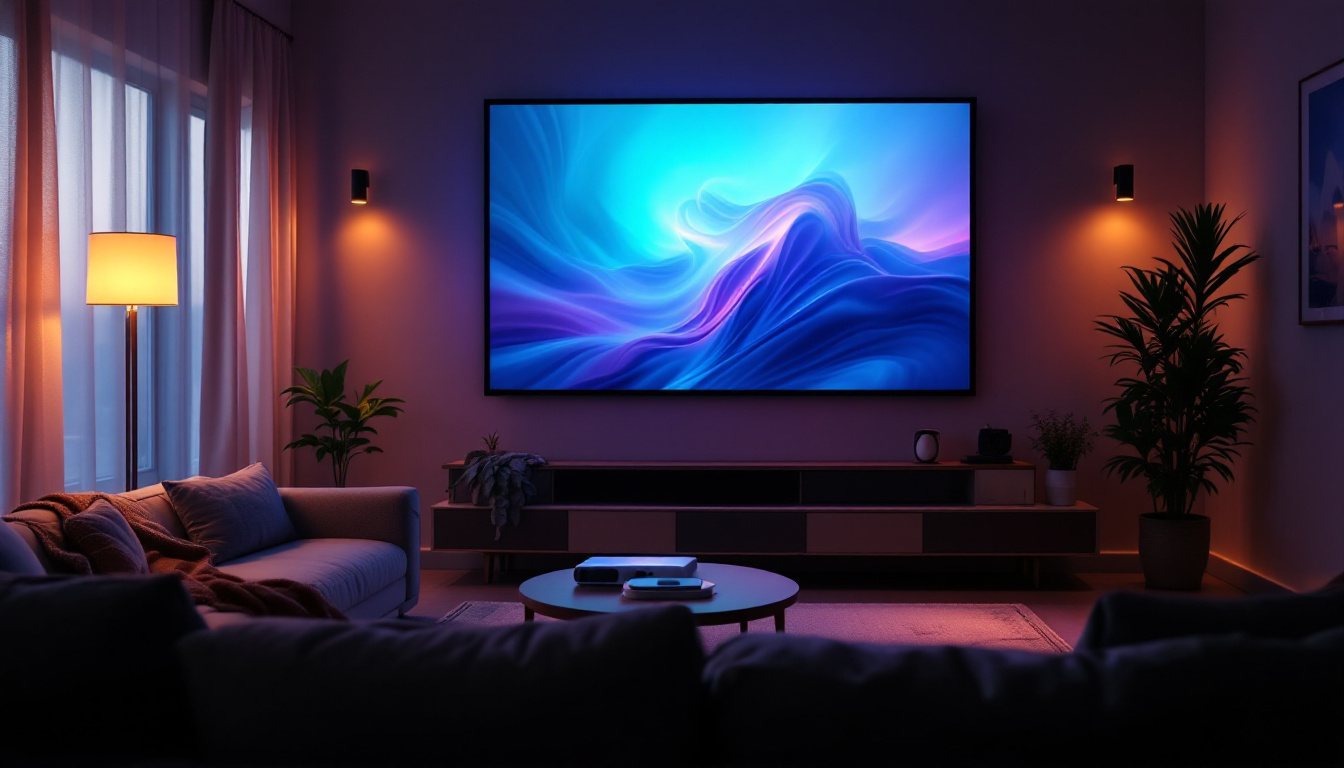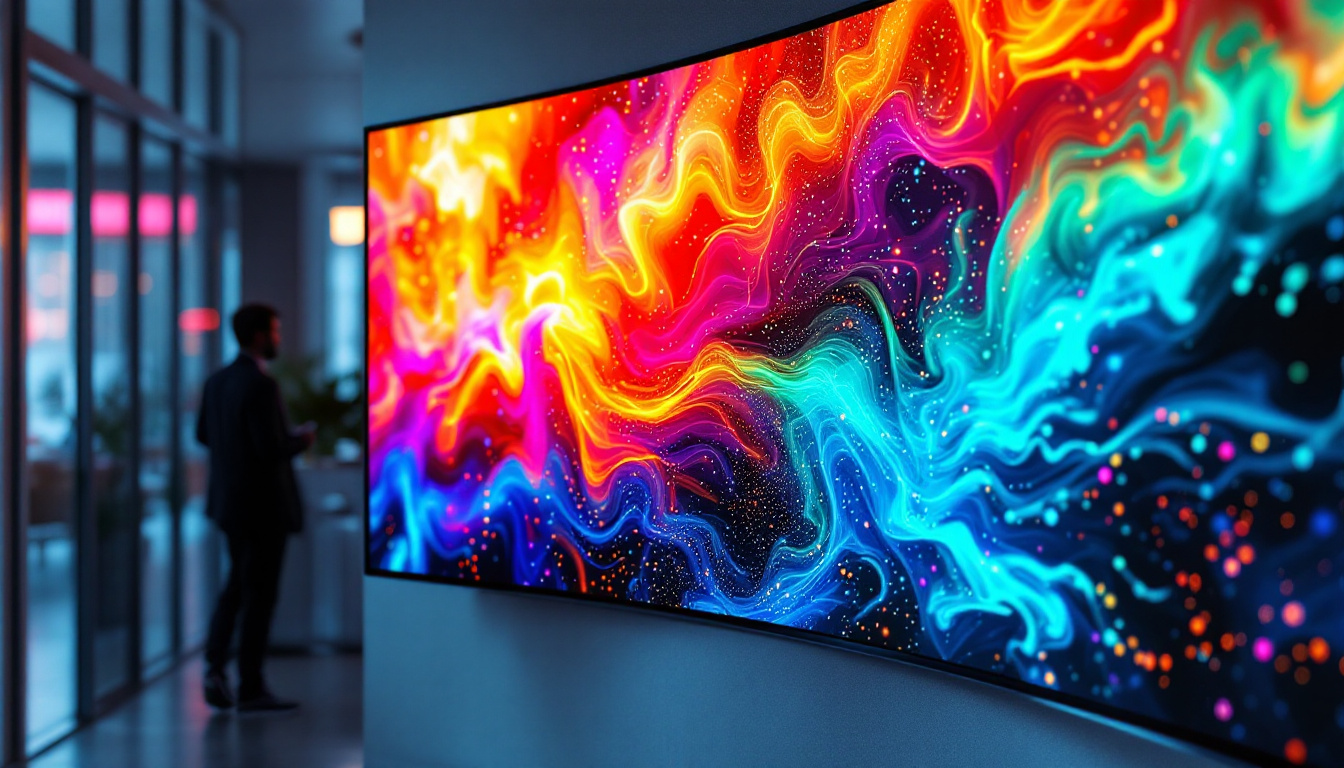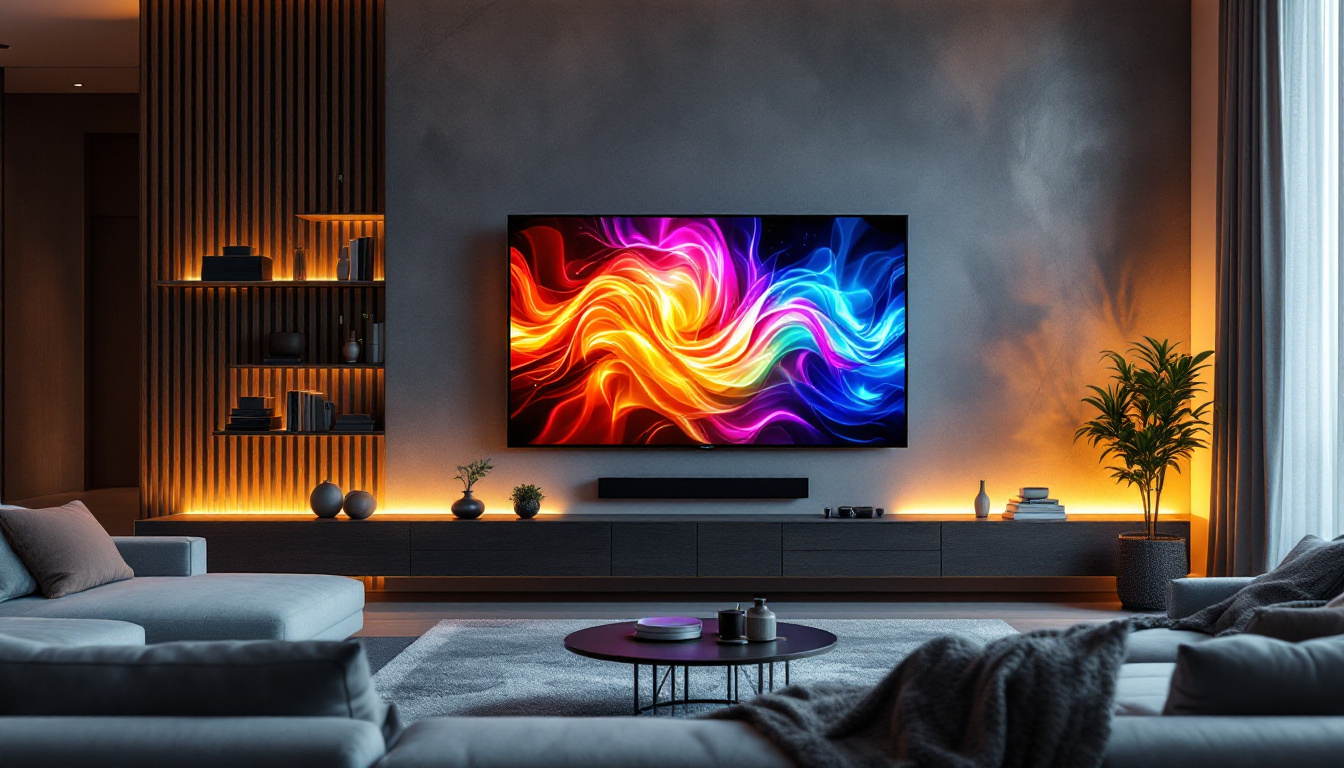In the realm of modern technology, displays have become an integral part of daily life. From smartphones to large-scale advertising boards, the evolution of display technology has been remarkable. Among the various types of displays available today, LCD (Liquid Crystal Display) and LED (Light Emitting Diode) displays stand out due to their unique characteristics and applications. Understanding these technologies is essential for anyone looking to invest in a new display or simply grasp the nuances of visual technology.
Understanding LCD Technology
LCD technology has been a cornerstone of display innovation since its inception. It utilizes liquid crystals sandwiched between two layers of glass or plastic to create images. When an electric current passes through the liquid crystals, they align to allow varying degrees of light to pass through, thus forming images.
How LCD Works
The fundamental operation of an LCD involves manipulating light. Unlike older technologies such as CRT (Cathode Ray Tube), LCDs do not emit light by themselves. Instead, they rely on a backlight, typically composed of fluorescent tubes or LEDs, to illuminate the display. The liquid crystals act as shutters that control the amount of light that reaches the viewer’s eyes, creating the desired images.
One of the significant advantages of LCD technology is its ability to produce sharp images with high resolution. This feature makes LCDs ideal for various applications, including televisions, computer monitors, and mobile devices. The clarity and detail provided by LCDs have made them a popular choice among consumers and professionals alike. Furthermore, advancements in LCD technology have led to improvements in energy efficiency, allowing for longer usage times without excessive power consumption, which is particularly beneficial for portable devices.
Types of LCD Displays
There are several types of LCD displays, each designed for specific applications. The most common types include:
- Twisted Nematic (TN): Known for their fast response times, TN panels are often used in gaming monitors. However, they can suffer from poor color reproduction and limited viewing angles.
- In-Plane Switching (IPS): IPS panels offer superior color accuracy and wider viewing angles, making them ideal for graphic design and photography.
- Vertical Alignment (VA): VA panels provide excellent contrast ratios, making them suitable for watching movies in dark environments.
Each type of LCD display has its strengths and weaknesses, making it essential to choose the right one based on specific needs and preferences. Beyond these common types, newer variations such as Advanced Fringe Field Switching (AFFS) and Super In-Plane Switching (S-IPS) have emerged, offering even better performance in terms of color consistency and viewing angles. These innovations cater to professionals who require precise color representation, such as video editors and digital artists, further broadening the scope of LCD applications.
Moreover, the integration of technologies like Quantum Dot and Mini LED backlighting into LCD displays has significantly enhanced their color range and brightness. Quantum Dot technology utilizes semiconductor nanocrystals to produce pure colors, resulting in more vibrant images. Mini LED backlighting, on the other hand, allows for finer control of local dimming, improving contrast and overall picture quality. These advancements continue to push the boundaries of what LCD technology can achieve, ensuring its relevance in an ever-evolving digital landscape.
The Rise of LED Technology
LED technology has revolutionized the display industry, offering brighter and more energy-efficient alternatives to traditional LCDs. While LED displays are often associated with LCD technology, they represent a distinct evolution in how images are produced and displayed. The transition from older technologies to LED has not only improved visual experiences but has also paved the way for innovations in design and functionality across various sectors.
How LED Displays Work
LED displays utilize an array of tiny light-emitting diodes to create images. Unlike LCDs, which require a backlight, LED displays can produce light directly. This capability allows for greater brightness, improved contrast ratios, and enhanced color accuracy. LED displays can be categorized into two main types: direct-lit and edge-lit.
Direct-lit LED displays have LEDs placed behind the entire screen, providing uniform brightness across the display. In contrast, edge-lit LED displays have LEDs positioned along the edges of the screen, relying on light diffusion to illuminate the display. While edge-lit displays are thinner and more energy-efficient, direct-lit displays often provide superior image quality. Furthermore, advancements in technology have led to the development of mini-LED and micro-LED displays, which utilize even smaller diodes to create more precise lighting control and deeper blacks, enhancing the overall viewing experience.
Advantages of LED Displays
LED displays offer several advantages over traditional LCDs, making them increasingly popular for various applications:
- Energy Efficiency: LED displays consume significantly less power than traditional LCDs, making them a more environmentally friendly option.
- Brightness: LED displays can achieve higher brightness levels, making them suitable for outdoor use and well-lit environments.
- Longevity: LED technology typically has a longer lifespan than traditional LCDs, reducing the need for frequent replacements.
These benefits have led to the widespread adoption of LED technology in televisions, computer monitors, and large-scale advertising displays. Additionally, the flexibility of LED technology has enabled creative applications such as digital signage and interactive displays, allowing businesses to engage customers in innovative ways. The ability to produce vivid colors and dynamic content has transformed advertising, making it more impactful and visually appealing. Moreover, the compact nature of LED technology has facilitated the design of ultra-slim screens that can seamlessly blend into various environments, from homes to commercial spaces.
Comparing LCD and LED Displays
While both LCD and LED displays have their unique advantages, understanding the differences between the two can help consumers make informed decisions. Here are some key comparisons:
Image Quality
Image quality is often a primary concern for consumers. While both technologies can produce high-quality images, LED displays generally offer better contrast ratios and color accuracy. The ability to produce deeper blacks and brighter whites gives LED displays an edge in terms of overall image quality. Furthermore, LED technology often employs local dimming, which enhances the viewing experience by allowing certain areas of the screen to be dimmed independently, thus improving the overall depth and richness of the displayed images. This feature is particularly beneficial for watching movies or playing video games, where visual detail is paramount.
Energy Consumption
Energy efficiency is another critical factor. LED displays consume less power than traditional LCDs, making them a more sustainable choice. This efficiency not only benefits the environment but also results in lower electricity bills for consumers. Additionally, LED technology has a longer lifespan compared to traditional LCDs, which means that consumers will not only save on energy costs but also on replacement expenses over time. This longevity is particularly appealing for those who use their displays for extended periods, such as gamers or professionals who rely on high-quality screens for work.
Cost Considerations
When it comes to cost, traditional LCDs tend to be more affordable than their LED counterparts. However, as technology advances, the price gap between the two has been narrowing. Consumers should weigh the initial investment against the long-term benefits of energy savings and improved image quality. Moreover, it’s worth noting that the market is increasingly flooded with a variety of models and brands, which can lead to competitive pricing. Shoppers may find that certain LED models are now available at prices comparable to traditional LCDs, especially during sales events or promotional periods. This trend allows more consumers to access high-quality displays without breaking the bank, making it an opportune time to consider an upgrade.
Applications of LCD and LED Displays
Both LCD and LED displays have found applications across various industries, each serving distinct purposes. Understanding these applications can provide insights into the best use cases for each technology.
Consumer Electronics
In consumer electronics, LCDs are prevalent in smartphones, tablets, and laptops. Their ability to produce sharp images and vibrant colors makes them ideal for portable devices. On the other hand, LED displays are commonly used in televisions, providing superior picture quality for home entertainment.
Commercial Use
In commercial settings, LED displays are increasingly popular for advertising and signage. Their high brightness and visibility make them suitable for outdoor use, capturing the attention of passersby. LCDs, while still used in some commercial applications, are more commonly found in indoor settings such as conference rooms and retail displays.
Medical and Industrial Applications
In the medical field, LCDs are often used in diagnostic equipment due to their clarity and precision. LED displays have also found applications in industrial settings, providing real-time data visualization and monitoring in manufacturing processes.
The Future of Display Technology
The future of display technology is promising, with advancements continuously reshaping the landscape. Emerging technologies such as OLED (Organic Light Emitting Diode) and MicroLED are gaining traction, offering even greater image quality and efficiency.
OLED Technology
OLED technology represents a significant leap forward in display innovation. Unlike traditional LCDs and LEDs, OLED displays do not require a backlight, as each pixel emits its light. This capability allows for true blacks and vibrant colors, making OLED displays a favorite among filmmakers and gamers.
MicroLED Technology
MicroLED is another emerging technology that combines the benefits of OLED and LED. By using microscopic LEDs to create images, MicroLED displays offer exceptional brightness, color accuracy, and energy efficiency. This technology has the potential to revolutionize large-scale displays, such as video walls and outdoor signage.
Conclusion
Understanding the differences between LCD and LED displays is crucial for making informed decisions in today’s technology-driven world. Both technologies have their strengths and weaknesses, catering to various applications and consumer needs. As advancements continue to shape the future of display technology, staying informed about these developments will ensure that consumers can make the best choices for their specific requirements.
Whether investing in a new television, a computer monitor, or an advertising display, knowing the nuances of LCD and LED technologies can enhance the overall viewing experience. As the market evolves, embracing these technologies will pave the way for a brighter, more visually engaging future.
Discover LumenMatrix’s Advanced LED Display Solutions
As you consider the future of your visual display needs, embrace the cutting-edge technology offered by LumenMatrix. Specializing in a wide array of LED display modules, from vibrant Indoor and Outdoor LED Wall Displays to dynamic Vehicle and Sports LED Displays, LumenMatrix is at the forefront of creating immersive environments. Whether you’re looking to captivate passersby with a Transparent LED Display or make a statement with a Custom LED solution, LumenMatrix has the expertise to bring your vision to life. Check out LumenMatrix LED Display Solutions today and step into a world where visual communication is redefined with clarity and impact.

